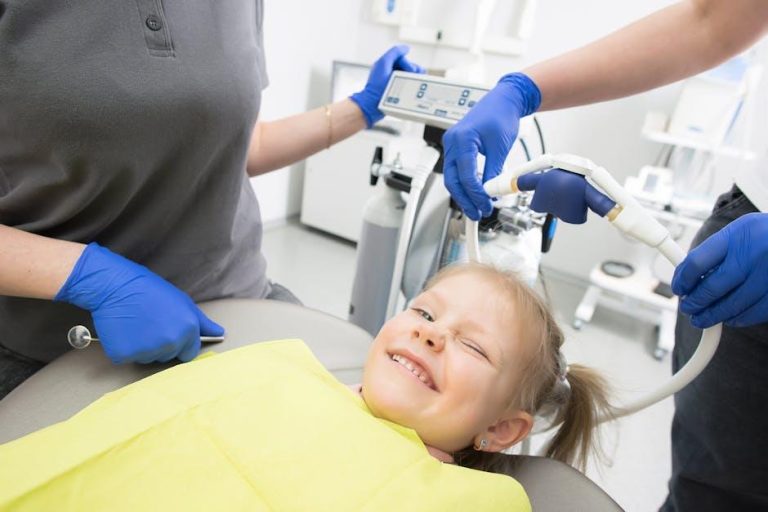1 in 3 Kids Has Dental Problems, Poll Finds – U.S. News & World Report
Dental health is a vital part of a child’s overall well-being, but recent findings from a poll highlighted by U.S. News & World Report reveal a concerning reality: 1 in 3 kids currently experiences dental problems. This statistic raises important questions about the state of pediatric oral health in the United States and what parents, caregivers, and health professionals can do to address this growing concern.
Understanding the Poll Results: What Does “1 in 3 Kids” Mean?
The poll, conducted nationwide, surveyed a diverse group of parents and healthcare providers to evaluate the prevalence of dental issues among children. According to the results, approximately 33% of children have experienced some form of dental problem, ranging from cavities and tooth decay to gum infections and misaligned teeth.
These dental problems can affect children of all ages but are most common in children between the ages of 3 and 12 years. Poor dental health can lead to pain, difficulty eating, speech complications, and even negatively influence self-esteem and academic performance.
Common Dental Problems in Kids
Here are the most widespread dental issues impacting children today:
- Dental Cavities (Tooth Decay): This is the most common chronic childhood disease, caused primarily by untreated decay due to plaque buildup and poor oral hygiene.
- Gingivitis: Early-stage gum disease characterized by inflammation, redness, and bleeding gums, often a result of plaque accumulation.
- Malocclusion (Misaligned Teeth): Improper bite or crooked teeth can affect chewing, speech, and overall oral hygiene.
- Dental Trauma: Injuries from accidents or sports that damage teeth or gums.
- Early Tooth Loss: Often caused by severe decay or injury leading to difficulties in future adult teeth eruption and alignment.
Table: Prevalence of Top Pediatric Dental Problems
| Dental Problem | Percentage of Affected Kids | Common Causes |
|---|---|---|
| Dental Cavities | 22% | Poor oral hygiene, sugary diet |
| Gingivitis | 8% | Inadequate brushing, plaque |
| Malocclusion | 5% | Genetics, thumb sucking |
| Dental Trauma | 3% | Accidents, sports injuries |
| Early Tooth Loss | 2% | Severe decay, injury |
Why Are So Many Kids Facing Dental Issues?
Several factors contribute to the high rate of dental problems among children in the U.S.:
- Dietary Habits: Increased consumption of sugary snacks, sodas, and processed foods creates an environment conducive to tooth decay.
- Limited Access to Dental Care: Many families face financial, geographic, or insurance-related barriers that limit regular dental checkups.
- Poor Oral Hygiene Practices: Inconsistent brushing and flossing habits, especially in younger children, allow plaque buildup and disease development.
- Lack of Awareness: Some parents and caregivers may not be fully informed about the importance of early dental care and preventative strategies.
- Behavioral Factors: Habits such as thumb sucking, bottle-feeding beyond infancy, or prolonged pacifier use also impact dental health.
The Long-Term Impact of Untreated Dental Problems in Children
Leaving pediatric dental issues unaddressed can lead to more than just physical pain. The consequences extend into various parts of a child’s life, including:
- Speech and Eating Difficulties: Pain or misalignment can affect how children speak and chew, limiting nutrition and communication skills.
- Emotional and Social Effects: Visible dental problems can cause embarrassment, anxiety, or reduced self-confidence in social settings.
- Academic Performance: Oral pain or discomfort can distract children, negatively impacting their focus and school attendance.
- Future Dental Health: Early dental issues often signal increased risk for adult oral diseases, potentially causing expensive treatments later in life.
Practical Tips to Prevent Dental Problems in Kids
Parents and guardians can play a proactive role in reducing their children’s risk of dental problems with these effective strategies:
- Start Early: Schedule your child’s first dental visit by their first birthday or when their first tooth appears.
- Practice Good Oral Hygiene: Help your child brush twice daily with fluoride toothpaste and floss once they have two teeth next to each other.
- Limit Sugar Intake: Reduce sugary snacks and drinks, offering healthier alternatives like fruits, vegetables, and water.
- Encourage Healthy Habits: Discourage thumb sucking past the age of 2-4 and prolonged bottle use to prevent developmental dental issues.
- Regular Dental Checkups: Visit a pediatric dentist every six months for cleanings and early detection of problems.
Case Study: How Early Dental Care Made a Difference
Consider the story of 7-year-old Mia from Ohio. Mia developed early signs of tooth decay by age 5 but after her parents partnered with a pediatric dentist and adapted to daily oral care and dietary changes, she experienced dramatic improvements. Her cavities were treated early, and with regular visits, Mia’s gums and teeth have remained healthy — illustrating the power of early detection and preventive care.
Firsthand Experience: Insights from a Pediatric Dentist
According to Dr. Jessica Morales, a renowned pediatric dentist in Texas, “Many dental problems we see today could be prevented if parents understood the importance of establishing solid oral care habits early on. Education, access, and regular screenings are key to changing the narrative around children’s dental health.”
Conclusion: Taking Action to Protect Your Child’s Smile
The U.S. News & World Report’s poll serves as a wake-up call highlighting that 1 in 3 kids has dental problems. While this might seem alarming, it also presents a clear opportunity. By embracing early preventative measures, establishing routine dental visits, and promoting healthy habits at home, you can protect your child’s oral health and set them on a path to a confident, pain-free smile.
For more information on children’s dental care or to find a pediatric dentist near you, visit the American Dental Association or consult your local dental health authority.


